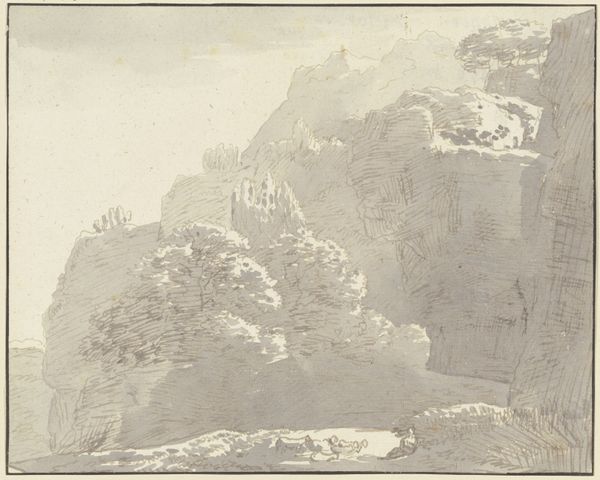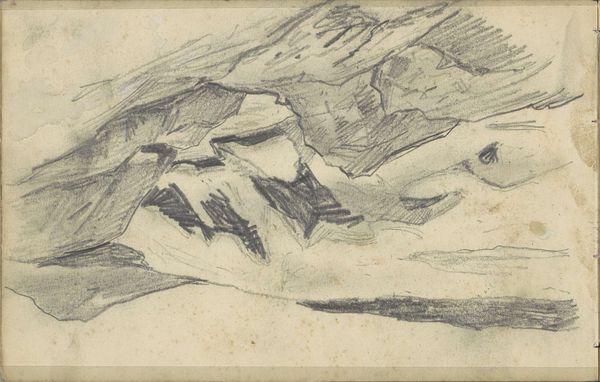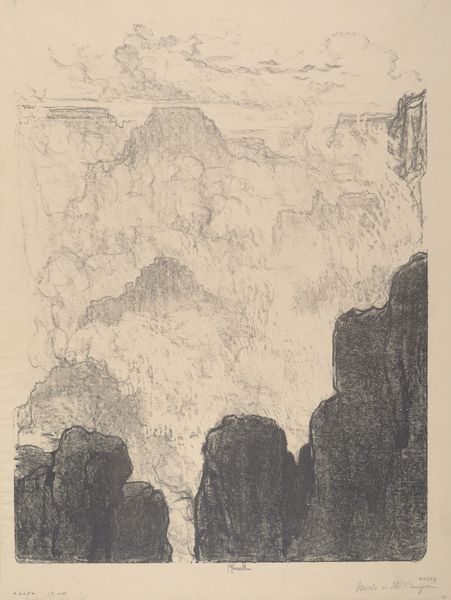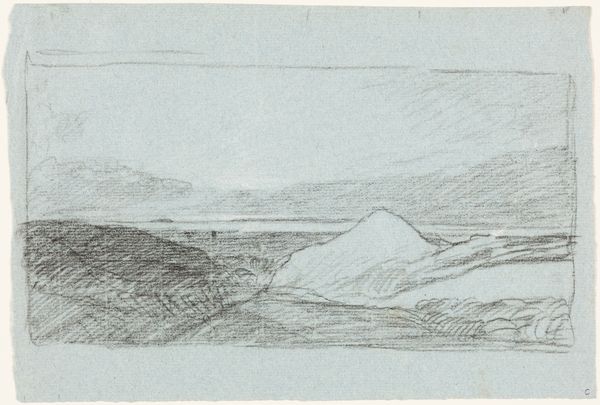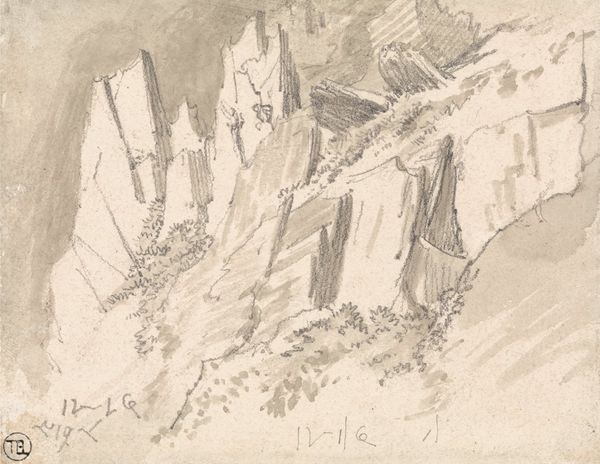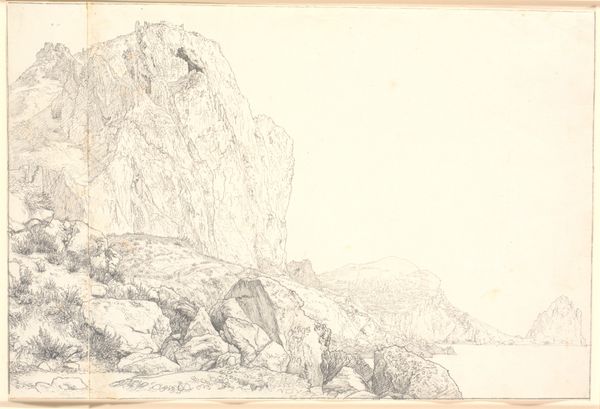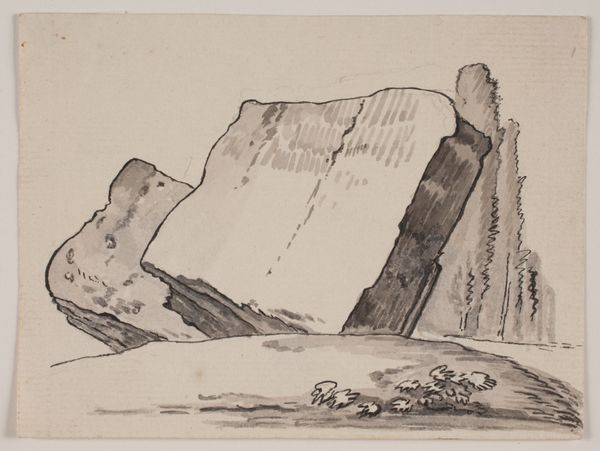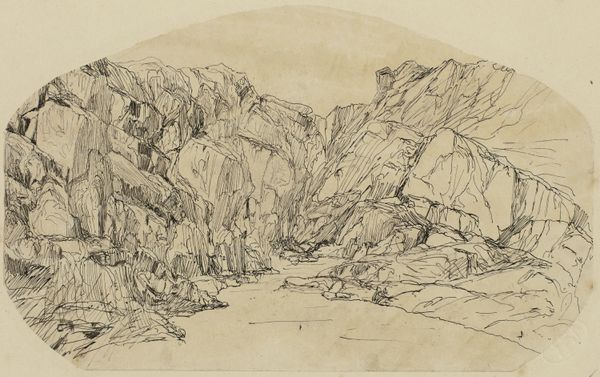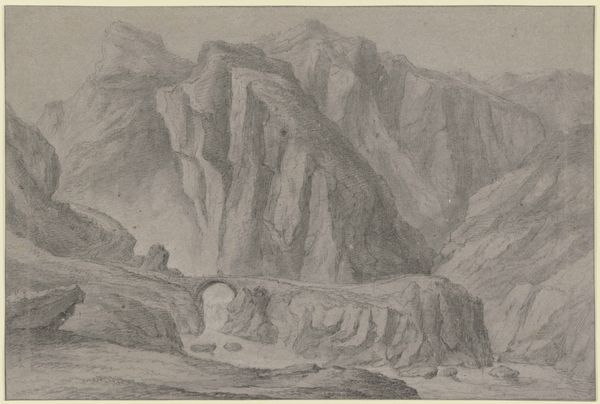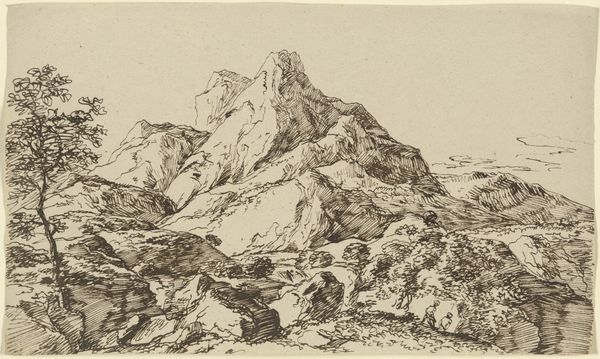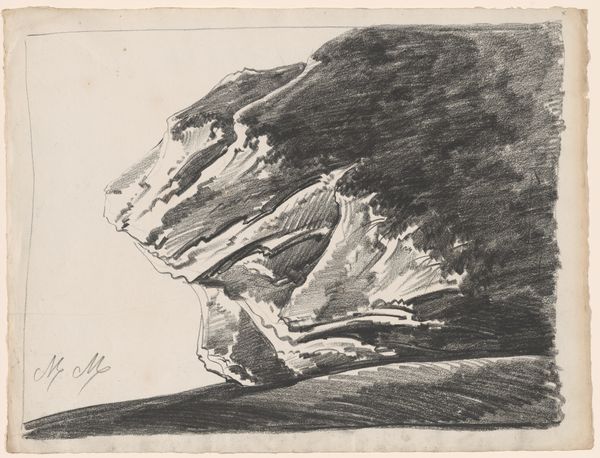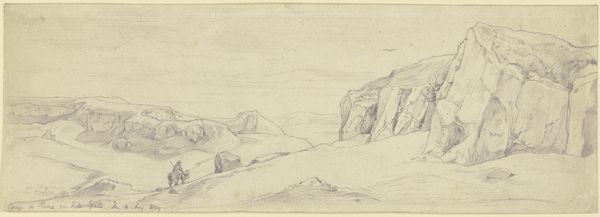
Design for Rock-work at Virginia Water, Windsor Great Park 1780 - 1790
0:00
0:00
drawing, print, pencil, pen
#
drawing
#
neoclacissism
# print
#
pen sketch
#
pencil sketch
#
landscape
#
pencil
#
pen
Dimensions: sheet: 4 1/8 x 9 1/4 in. (10.5 x 23.5 cm)
Copyright: Public Domain
Curator: Welcome. Today, we are looking at Thomas Sandby's "Design for Rock-work at Virginia Water, Windsor Great Park," dating from 1780 to 1790, now held in the Metropolitan Museum of Art. The artwork uses pen, pencil and print for its construction. Editor: My first thought is how ethereal the rocks seem, despite their implied mass. It’s as if Sandby’s linework almost dematerializes them. The composition seems very deliberately staged too, balanced yet slightly asymmetrical. Curator: Precisely! Sandby orchestrates a tension between representation and form. Notice how the structural elements – the rocks themselves – become vehicles for exploring abstract tonal contrasts, primarily with the use of shading. Editor: And yet, the artwork strikes me as incredibly labor-intensive, given the detail in what's ostensibly a preparatory design. It seems to elevate the status of the drawing closer to fine art. Did this represent a shift in artistic practices at the time? Curator: Absolutely, one might consider it in the broader social and cultural context, of the period. Here the medium conveys a precise rendering within the confines of Neoclassicism, emphasizing its structural clarity and underlying rational order. Editor: I’m also struck by the implied contrast between nature's chaotic forms and man’s control of nature – fashioning these rocks into something "designed." One begins to contemplate man laboring, carving, and placing. It’s a staged romantic ideal, perhaps. Curator: I see what you mean about nature tamed but what do you make of the drawing style? Its effect really showcases how form arises, the shadows and depth created solely by pen, pencil and printed tonal modulations, the negative spaces so clearly created? Editor: Well, it prompts considerations about landscape artistry more generally; the very act of creation by the man seems less a celebration of nature and more so about imposing one's design onto the natural landscape through heavy means. Curator: Thank you for offering us your perception. Exploring Sandby's rendering gives the visitor some insight into the world it depicts and I find its structural and compositional construction to be thought-provoking. Editor: The process truly does unveil how social values, especially around labor and the relationship to land, influence artistic vision, regardless of the classical aesthetic at play. Thank you.
Comments
No comments
Be the first to comment and join the conversation on the ultimate creative platform.

